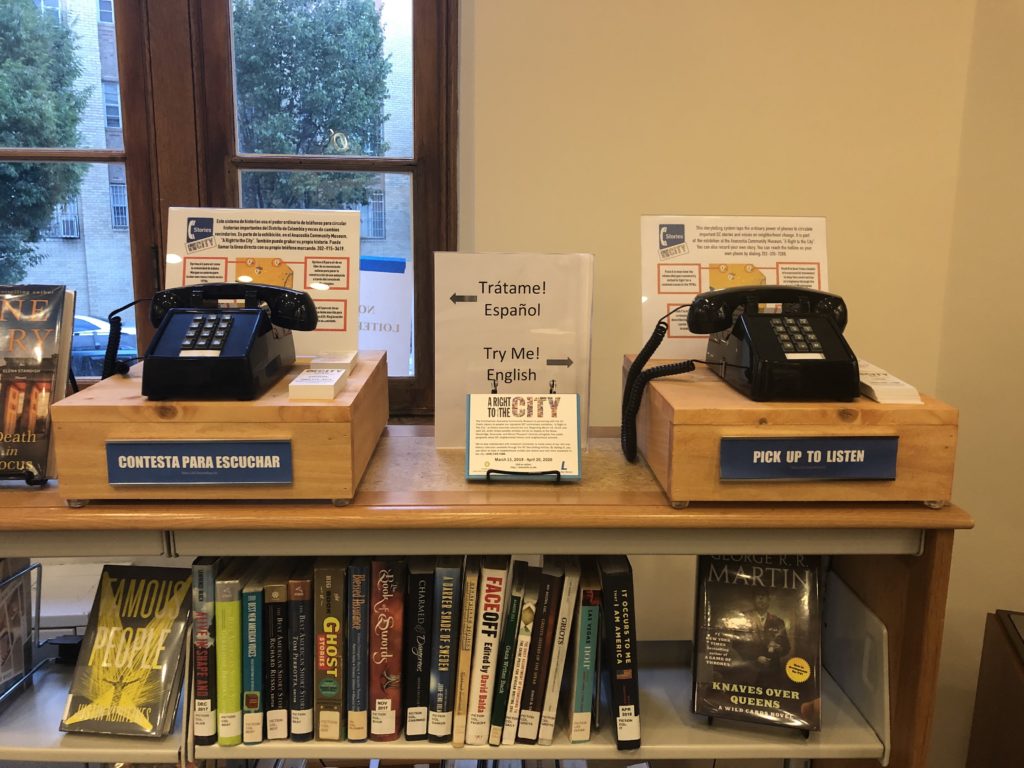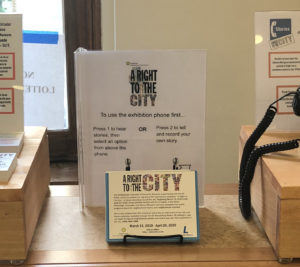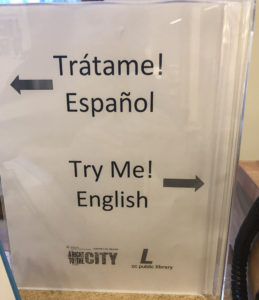In honor of Hispanic Heritage Month, we created a Spanish version of our hotline and installed a direct line at the Mt. Pleasant Neighborhood Library (on 9/17/2019). This library is a focus for Latino events and activities in the DC area, and was eager to refine their installation for the A Right to the City exhibition.

Having the two phones next to each other immediately made the entire set-up look much more intentional. This helps with a barrier to use that we had observed with just the English phone: some people still wondered if they were supposed to interact, or if it was an accident. With two physical phones, the intentionality is clear and the invitation is stronger.
Our signage evolved considerably with the dual-phone setup. Before:

On the fly, we made a prototype sign — not just to emphasize the Spanish opportunity, but to amplify the invitation and make clear this is no accident:

Our goal to be more invitation and offer a clear nudge led to smaller logos, larger fonts, and the big arrows.
One limitation: while the hotline menus and story introductions are now in Spanish, the actual stories from the Smithsonian’s oral histories are still in English. That preserves their authenticity, but leaves a jarring reminder that we need more Spanish-language content. So this month, staff at the Mt. Pleasant library are recommending the hotline to Spanish-speaking visitors at some of the events for Hispanic Heritage Month (Sept. 15-Oct. 15); we hope this will provide a seed for the content we desire.
Update (Nov. 17): The Spanish hotline has been updated to include exclusively Spanish-language content. Currently, a story from Daniel Bueno, the founder of the Adams Morgan record store, Zodiac, is featured on the listening section of the hotline.
This post was contributed by Hazel Arroyo, a Game Design graduate student at American University, with feedback from the team at The Playful City Lab.